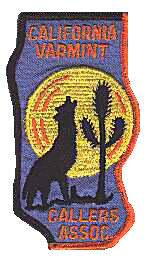|
The California
Varmint Callers Association
The first varmint hunting site on the net! The California Varmint Callers maintains this webpage for the benefit of all varmint and predator hunters.
|
||||||
|
|
A friend of mine wanted to have a remote controlled electronic game caller but couldn't afford the high price tag of many commercial units. I had already built a number of other units for various friends so in exchange for getting a cat skin tanned I built his unit for him. I was able to build the game caller for about $75 with "off the shelf" stuff. It sure beat the $300 plus you can pay for some electronic calls. All you need is some easily available stuff you can get from your local Radio Shack and Hobby Store. The AM/FM/Cassette player pictured was purchased at Radio Shack for about $30 by my friend. (NOTE: it has been previously said in this article that the cassette player was obtained for about $15. That was incorrect. The correct price was $30) It is an "auto stop" cassette player. I would have preferred an "auto reverse" player but since he had already bought this unit was obliged to work with what he gave me. Most cassette tapes have 30 minutes worth of recording on one side so it should be no big deal that it's "auto stop". You just need to remember to rewind the tape or flip over the cassette before your next stand. One important aspect to the cassette player that you should consider is that it have a "sliding" volume control. You don't want a "rotary" volume control as it is harder to adapt the servo to it. It's not impossible but a lot harder to do.
The remote control transmitter and receiver were originally intended to be used on a model car or boat but it was easily adapted to work with the cassette player. The remote controller cost about $45. The remote control unit originally came with 2 servos. You only really need one servo in order to control the volume of the cassette player. Haggling with the Hobby Shop owner, I was able to get the price reduced to $45 in exchange for getting only one servo with the unit. Inside the remote control is a small spring connected to the "volume control" or joystick. It keeps the joystick centered and this spring needs to be removed so it will work as a volume control. As the picture shows, the left joystick is fully in the down position. If the centering spring were still in place the left joystick would look like the right one (centered). The left joystick controls the volume and the right joystick doesn't do a thing. Keep abreast of further developments here as the right joystick will soon be used to control a decoy! The various screws, brackets and zip ties were already laying around the garage. I don't figure they cost more than a coupla' bucks.
In the picture, the construction of the unit is clearly seen. The servo that controls the volume is mounted to the top of the player with a steel bracket. A small hole was drilled into the tab of the sliding volume control. A small, stiff spring was connected between the arm of the servo and the tab of the sliding volume control. Any old piece of stiff wire could have been used here but I just happened to have the spring laying around so used it. I found a piece of scrap sheet metal and simply bent it to fit neatly over the servo. It was then screwed to the top of the player with some short sheet metal screws. You should use short sheet metal screws to mount the servo because you don't want the screws to go into the circuit board underneath. The on/off switch for the remote receiver was mounted to the back of the servo and then epoxied in place.
The remote radio receiver was mounted to the side of the cassette player. There are three sets of wires that you need to deal with. The power wire, the servo wire and the antenna wire. The radio receiver needs 5 volts in order to operate properly and it just so happened that the cassette player was a six volt unit. You can put a little (I'm talking about 1 Volt) more voltage to a unit with no ill effects as they are designed for a certain range of input voltage. The power wires were simply connected, thru the on/off switch, to the same batteries used to power the cassette player. Six volts to the radio receiver has not seemed to hamper its performance and it is still going strong. I wouldn't want to put more than six volts to the receiver though or you may burn it up. Coming out of the receiver is a green colored antenna wire. It was connected to the same steel AM/FM antenna that is used for the cassette player. I would be surprised if it weights more than two or three pounds. AM/FM Cassette = $30.....Remote control unit = $45...... TOTAL = $75. Batteries not included. (Editor) Since this article was written, both the radio receiver and the ON/OFF switch have been mounted internal to the cassette player. This makes for a much cleaner installation.
|
|||||
